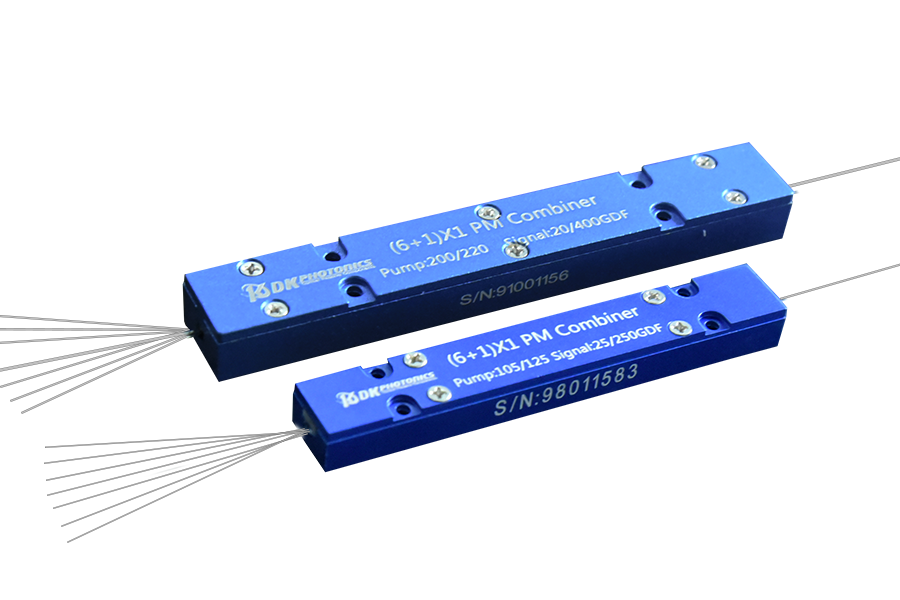Pump combiners are used for fiber lasers, fiber amplifiers, high-power EDFA (erbium-doped fiber amplifiers), sensor systems, etc. They are passive components used in power systems that are combined to produce high power output for the delivery/pump fibers. It also increases the efficiency of the power system. The technique used in the construction of a pump combiner is called Fused Biconical Taper (FBT).
They are designed in such a way that allows more than one pump fiber to arrange around a single fiber that is usually surrounded by a glass tube. They are available in three different constructions, which are mentioned below:
-
Multimode NX1 –
They work to create high power output by combining power from different optical fibers. They can easily couple 7 or 19 multimode sources into the cladding-pumped fiber. They are used in high power applications like direct diode material processing and pump cascading to provide high-efficiency power transfer with optimum brightness conservation.
-
(N+1) x 1 Pump and Single-Mode Signal Combiner –
This type of pump allows single input transfer by the single-mode fiber. They are designed to provide combined power output and can also be used with a cladding-pumped fiber as it can couple 6 or 18 multimode sources and 1 SM signal source. Their most common use lies in military and medical industries and can also be used in telecommunication to design amplifiers.
-
(N+1) x 1 Pump and PM Signal Combiners –
They contain one polarization-maintaining source with the design to couple 6 multimode sources and are efficient in producing a combined power output. They are built to use with a PM cladding-pumped fiber. These combiners have polarization-maintaining properties only for the signal and therefore, are used to design amplifiers with signal polarization outputs for use in industries, military, medical, or telecommunications applications.
What Are the Features of a Good Quality Pump Combiner?
Choosing the right pump combiner as per the use is very crucial to ensure the proper functioning of the application systems. Make sure that the diameter of the fibers is the same for high-quality fusion splicing with the core positions properly. The fibers of the pump must have high compatibility with the fibers of the laser diodes of the pump. Having higher pump diode values will not affect the power coupling efficiency but may not allow full utilization of pump brightness.
Matching the intensity profile of the fundamental signal fiber mode and the fundamental mode of the active fiber core will help in coupling signal light into the fundamental mode efficiency. Ensuring minimum losses of the pump light while propagating through the combiner will help you in maintaining coupling efficiency higher than 90% and save it from thermal damage. The combiner should be able to hold the intended optical power levels.
Are you looking forward to buying pump combiners? If yes, then explore our website and check out which pump combiners are the best fit for your application. In case you don’t find the specifications that you are looking for, please contact us right away.


Leave A Comment